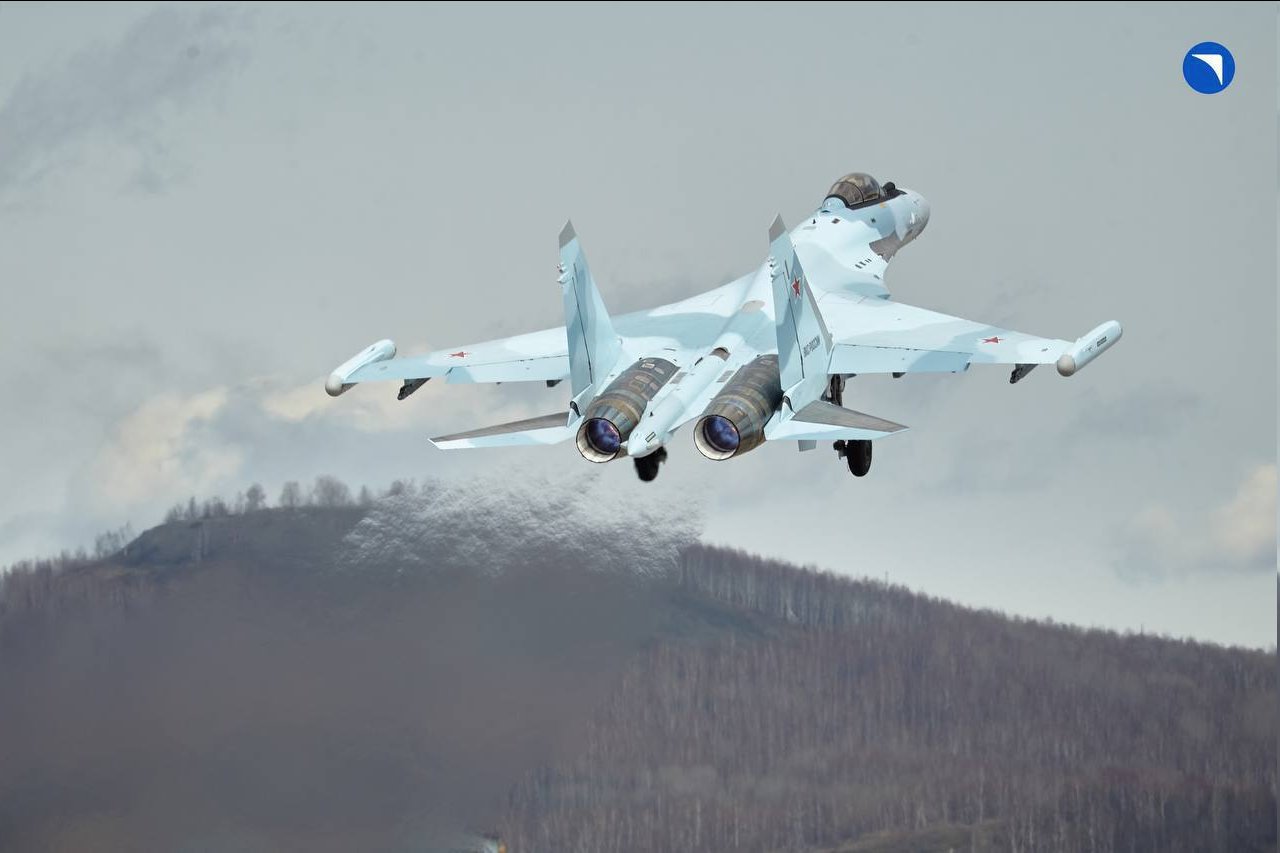Calibre interview: James Acuna, Baltic Ghost Wing
For this interview, Calibre Defence spoke with James Acuna, who runs Baltic Ghost Wing – a training range for drone pilots and testing facility for drones in Estonia to hear more about what the company does, and what the future might hold for the drone ecosystem.
Baltic Ghost Wing, the adjudicator.
In Estonia, there is a training polygon for drone pilots. It’s around 50 square kilometres and for €2,500 per day, companies can take their drones there and test them to see if they work as they hoped. The goal is to replicate the severe conditions that military and commercial drones might encounter, including sub-zero temperatures, aggressive flight profiles, and an open training space for drone pilots to gain experience and expertise. “Whenever I start a new business, I think – what does success look like? And for me, with Baltic Ghost Wing, it’s like pilots or firemen talking about success and lessons learned in flying or firefighting. It’s about guys sharing stories about learning how to fly drones and that sort of thing. The EU, the US aren’t setting these things up, but Russia and China are,” James Acuna, who worked for the CIA for 20 years, told Calibre Defence in late April.
He set up and runs Baltic Ghost Wing, a specialist training and testing facility in Estonia for drones and FPV pilots. In James’s words, Baltic Ghost Wing was “created because of the failure of companies to integrate their capabilities into Ukraine. Why not test systems in similar conditions in Estonia before they go to Ukraine?” he explained, referring to some of the challenges that have come from large scale donations to Ukraine. “People are going into Ukraine all for the wrong reasons, and that reason is to get a seal of approval. It’s a sham,” he added.

Drone pilots can receive a lot of training in Ukraine, but they also develop additional skills during operations. Baltic Ghost Wing helps to bring some of those TTPs to an environment outside of Ukraine. Credit: 10th Mountain Assault Brigade/Ukrainian MoD
Baltic Ghost Wing provides a range of services to companies and soldiers, including training in advanced drone flight and maintenance. The other side is in flight testing and assessment of drones. “What I have learned is that some manufacturers will modify their drones and they will go out to Estonia and test it for a couple of days. So they are looking for a set amount of days that they can use. It depends on what they need, but Baltic Ghost Wing supports the full needs; provides a team house, a car and a driver, a translator,” he said, highlighting the flexibility of the company. He cautioned, however, “there are limits to what we can do in terms of speed and altitude because of our proximity to the border.” For anything above a certain altitude or speed, a company would likely have to go to Ukraine, he said. The team is also working to build a digital training product to support the practical side.
“We have a drone-specific Chat GPT that has every TTP [tactic, technique, and procedure] fed into it that we have collected and you can ask it any question and it will give you an answer,” James explained. Technology has evolved rapidly in Ukraine, but so have the tactics used to deploy them. Russian units have, at times, carried FPVs as far forward as they can during an offensive to use them for fire support against a trench, for example. Both sides use them to interdict logistics, extending the lethal zone up to 30 km behind the frontline.
Forged in battle?
Dozens of companies have rushed to support Ukraine, often at their own expense or with government funding. However, not all of the products provided by the West have worked as hoped. GPS-guided munitions like the 155 mm Excalibur are a relatively well-known example, but they are not alone. As a result, there are many that now state their products have been proven in Ukraine. Many of them have, but James is not convinced by all of them.
“I have 60 – 70 drone pilots, companies, and engineers from Ukraine speaking to me,” James explained. They share their experiences with various systems provided from abroad, what works, what doesn’t. “Baltic Ghost Wing is an adjudicator if you will. So, if a company states their drone can fly in sub-zero temperatures, we will get a Ukrainian pilot to fly it the way they would. We can do it publicly, or privately if they like,” James said.

The Obriy from Kara Dag Technologies is a drone detector that provides a view of the analogue video channel used by most FPVs. It has been developed and built in Ukraine based on direct engagement with users. It is understood to be much cheaper than alternative systems. Credit: Kara Dag Technologies
“There’s a difference between testing and trying to help Ukraine. If you just want to test, there’s a lane for that and I know people that would help,” James explained, adding, “I want to make sure that people want to help Ukraine.” Many Ukrainians working on the frontlines or in the country’s defence industry have mentioned the challenges with integrating western equipment, which often doesn’t work as expected, or costs far more than what they can build themselves.
There are also challenges with iterating and improving systems as the situation evolves. Products in Ukraine, especially where drones are concerned, require rapid changes to their software or hardware to keep them relevant, as recently explained by a team from Kara Dag Technologies. Without a presence on the ground in Ukraine, or continued investment in their products – which may not be funded by any government – their products may quickly become irrelevant.
“I’ll give you an opposite story, a UK company called UAVTEK. We were meeting in Kyiv and he [the CEO] came to meet me from Donetsk. He was taking lessons from the frontline himself and integrating them directly into their drones on the fly,” James gave as an example of what he feels working with Ukraine should look like. When frequencies for drones and jammers can change on a weekly basis, this is the only way to ensure that drones will work as required. “If you visit a drone garage in Ukraine, you’ll have soldiers running in saying ‘hey the frequencies this week are ABC’ and the teams will modify the drone guns or jammers at that point,” James said.
Looking ahead
Looking ahead, James has a few concerns, ranging from the ecosystem that produces and develops drones through to the pilots that fly them. “The drone R&D ecosystem in eastern Europe is brought up by startups, and the primes go and buy the leaders for pennies on the dollar, because their revenue is so huge they have the cash to be able to do this stuff,” James said. This effect has been observed by some generally across the defence industry, with many companies consolidated into a handful of defence primes over the past 40 years. James worries that “the Ukrainian ecosystem will be picked apart like a failed chain of shops, and all of them will go away, and the rest will scatter.” Some Ukrainian companies have secured funding, which will help them expand and consolidate in the short term, and hopefully pivot to the export market in the medium to long term. But those without may struggle to survive beyond the end of the war.
Outside of this, James expressed concern that experienced Ukrainian pilots might seek out opportunities elsewhere – in crime, or other military adventures abroad. “Why not start a recruiting phase to get pilots to the EU as teachers and instructors?” he posited. This could have very destabilising effects on other conflicts. FPVs were used extensively by Assad’s forces in Syria prior to the Hay’at Tahrir al-Sham (HTS) offensive, and by HTS fighters too. Kurdish militias also proved effective in their use against Turkish-backed forces in the disruption that followed. Rudimentary FPVs have been used in Haiti, by gangs in Ireland, by FARC dissidents in Colombia, and by Mexican cartels to watch US troops on the US-Mexico border. A flood of expertise and experience from both Russia and Ukraine, could significantly improve the quality, quantity, and nature of these attacks.
Calibre comment
Western forces are beginning to expand and develop the uncrewed portions of their forces, realising the capabilities that massed ISTAR assets can provide. Testing these systems in operational conditions is critical. Very cold weather can reduce the flight time of a battery-powered ISTAR drone by 50%, according to a Swedish armour officer, who spoke at the 2024 IAV conference in London. Flying an FPV aggressively can be difficult or impossible to practice on a conventional training range, which means it becomes hard for manufacturers to understand and examine the limits of their systems. Training areas like that established by James and his team could consequently become very useful to defence companies and MoDs as they progress towards the greater use of drones.
By Sam Cranny-Evans, published on 28th May, 2025.

Sign Up for Updates!
Get insider news, tips, and updates. No spam, just the good stuff!






